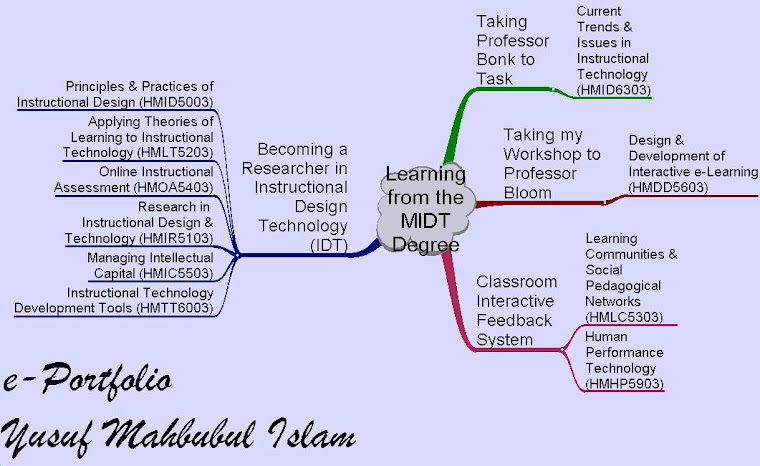 The group that created course blogs and a website to manage the blogs was given a special contract, over Summer 2010, by the Chairman of the Governing Board, to implement the social blogs in six core subjects in the department of Computer Science. Once the blogs were ready and tested, the Chairman gave permission to host the blogs on the official university server and provide a link. The system is called "SocialWeb" as seen in the figure above (please click on the figure to see the link). The URL of the website is: http://socialweb.daffodilvarsity.edu.bd/
The group that created course blogs and a website to manage the blogs was given a special contract, over Summer 2010, by the Chairman of the Governing Board, to implement the social blogs in six core subjects in the department of Computer Science. Once the blogs were ready and tested, the Chairman gave permission to host the blogs on the official university server and provide a link. The system is called "SocialWeb" as seen in the figure above (please click on the figure to see the link). The URL of the website is: http://socialweb.daffodilvarsity.edu.bd/As the Social Web was being implemented, the immediate problem was what should students write about in a course blog and when should the postings be made? At this point, the learning from another MIDT course, HMOA5403 Online Instructional Assessment, came in handy. At the end of a class, the students would answer questions like, "What did you learn in today's class" and "What more do you wish to learn about the subject?"These two questions gave the six teachers involved in the Social Web implementation food for thought.
 The teachers then subsequently adapted the use of each course blog to their own needs. An example is shown in the figure on the left (please click on the figure to see the blog entries). The questions are from a course called Computer Fundamentals. The author asks subject oriented questions. Some teachers used the Social Web blogs innovatively to solve their own subject related problems. Some teachers, however, did not appreciate the transparency. Another 29 teachers across the university have now requested that their subjects be considered for inclusion in the Social Web! The learning from the Summer 2010 implementation has been incorporated in a report.
The teachers then subsequently adapted the use of each course blog to their own needs. An example is shown in the figure on the left (please click on the figure to see the blog entries). The questions are from a course called Computer Fundamentals. The author asks subject oriented questions. Some teachers used the Social Web blogs innovatively to solve their own subject related problems. Some teachers, however, did not appreciate the transparency. Another 29 teachers across the university have now requested that their subjects be considered for inclusion in the Social Web! The learning from the Summer 2010 implementation has been incorporated in a report.So, not only did I appreciate the HMLC5303 "Learning Communities and Social Pedagogical Networks" as a course, I have put the course in action. Unfortunately, I was not able to convey my appreciation of the subject to my teachers who gave me a "B". At our university, the Social Web is helping close the gap between the students who have been labeled "weak" and the teachers who have high academic qualifications. Those who use the Social Web at our university are in a position use the Social Web to supplement face-to-face classes to create a sort of "blended-learning" environment.
Using the Social Web has answered an unanswered question from another course, HMHP 5903 "Human Performance Technology (HPT)". For this course, we were required to do a needs analysis for a chosen problem. The chosen problem was that the students of the Computer Science department at our university have problems understanding programming. The HPT assignment was to propose an intervention that could solve this problem. The ideas proposed in the assignment were carried out, however, I was not satisfied that the real problem had been pin-pointed. The problem I found with interviews and questionnaires is that people do not look in depth at their own work. They suggest that problems lie elsewhere. Here the general complaint of the teachers was that "students are weak!". The Social Web has helped identify the crux of the problem - the teachers do not carry through the concepts taught to practical work. The basic weaknesses continue through all the Computer Science courses!
Alhamdulillah, the analysis of the Social Web blogs provided the answers needed for the needs analysis of the HPT assignment! As the Summer 2010 report on the Social Web experience shows, students from four different batches have the same complaint - they do not understand fundamental concepts. The Chairman has now appointed a new Head of the Computer Science department with the task of looking into and solving this problem. The Chairman is now so impressed that he wants a plan to implement the Social Web across the university! MIDT on the move!

No comments:
Post a Comment